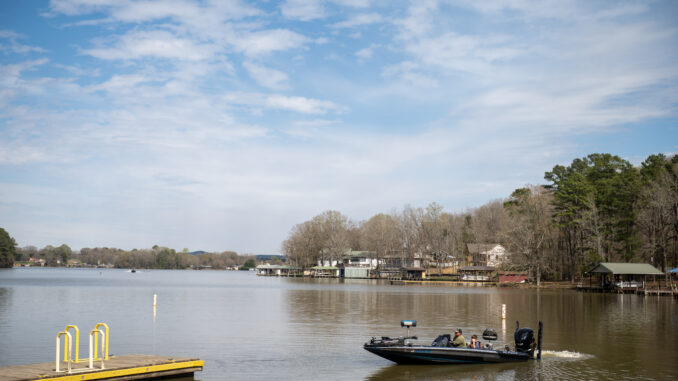
NORWOOD — The treatment of a non-native, invasive species clogging up Lake Tillery is set to ramp up soon, according to the North Carolina Department of Environmental Quality’s Aquatic Weed Control Program.
On March 13, over 200 people attended a public meeting at Norwood’s Center Rural Volunteer Fire Department Station that focused on hydrilla, a plant from Asia that is one of the most difficult aquatic invasive species to control.
Hosted by officials representing the DEQ’s Division of Water Resources, the meeting included a presentation on the biology and history of hydrilla, as well as its spread and management at Lake Tillery.
“On a national basis, hydrilla is really the most widespread aquatic weed problem across the US. Most of our other aquatic weed problems are more regional in nature,” Rob Richardson, professor of aquatic weed management at NC State. “It will reduce habitat quantity and quality for other organisms. It will inhibit recreational activities when it becomes widespread. It can clog drinking water intakes and there is an avian disease.”
The aquatic weed was first identified in Wake County in 1980 and has since spread to other water resources across the state, including Lake Tillery, where it reported in 2006 near the Swift Island boat ramp.
Management activities were implemented by the Aquatic Weed Control Program to handle the hydrilla acreage that peaked at 150 acres in 2009 and dropped almost to zero between 2019 and 2021.
When a survey from 2022 found 130 new acres of hydrilla, the DEQ, Duke Energy and the North Carolina Wildlife Resources Commission partnered to treat 69 acres in four lake locations with systemic herbicide treatments and 1,860 triploid grass carp.
The figure now sits at a record-high 257 acres, according to a survey from last fall.
Due to the rapid growth, 3,688 triploid grass carp will be released in June to treat lake areas around Lilly’s Bridge and Norwood with the primary goal of preventing hydrilla from impacting the use of boat ramps. The fish are considered a natural method for controlling aquatic vegetation and macro-algae as they consume hydrilla as a preferred food.
Officials estimate that it could take around 10 years to fully rid the lake of its hydrilla problem because of the current extensive spread of the weed.
“One of the main ways that hydrilla is spread is through fragmentation. We don’t want people getting it stuck on their boat or product or something like that, and then moving into a water body,” said Drew Gay, an aquatic weed specialist with the Division of Water Resources at the Department of Environmental Quality. “We were able to get it down to about four acres, so it’s something that we’ve done in the past and it’s something that we’re going to be able to get down again.”
Duke Energy has unveiled a reporting tool on its website where hydrilla sightings at Lake Tillery can be submitted with resident contact information, plant location and photos; the information will then be communicated to the DEQ for incorporation into the management plan.
